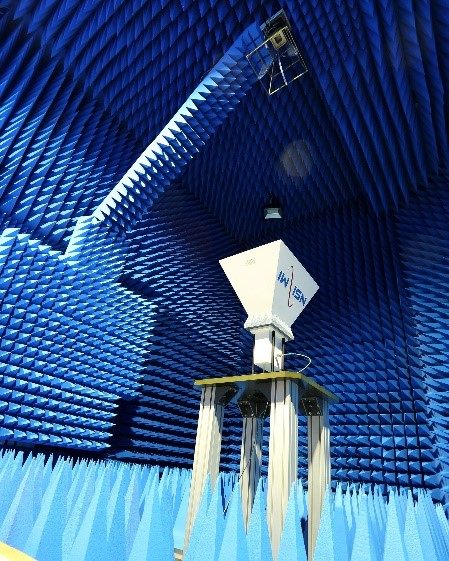
Modern driver assistance systems require a large number of sensors to increase safety on the one hand and comfort on the other. Radar sensors with a good spatial resolution are essential for the safety of autonomous vehicles. A high spatial resolution is achieved by using a large number of antennas. By clever spatial distribution of transmitting and receiving antennas, a virtual array antenna can be created according to the multiple-input/multiple-output (MIMO) principle, whose spatial resolution is significantly better than the real aperture of the radar sensor would allow.
But what are the properties of antennas for radar systems, and what are their radiation characteristics? It is precisely these parameters that can be investigated in the antenna measurement chamber at the FMD member institute Fraunhofer FHR. It enables precise investigations of individual and array antennas from 300 megahertz to 50 gigahertz in the frequency range. But even the smallest antennas can be analyzed - such as on-chip antennas, i.e., antennas that are one to two millimeters in size and integrated on a chip.
 Fraunhofer Group for Microelectronics in cooperation with the Leibniz institutes IHP and FBH
Fraunhofer Group for Microelectronics in cooperation with the Leibniz institutes IHP and FBH